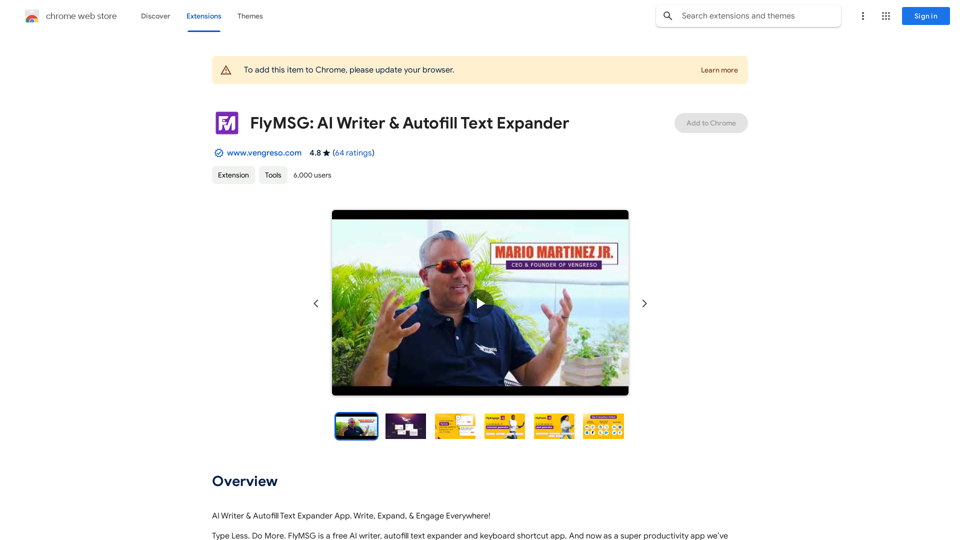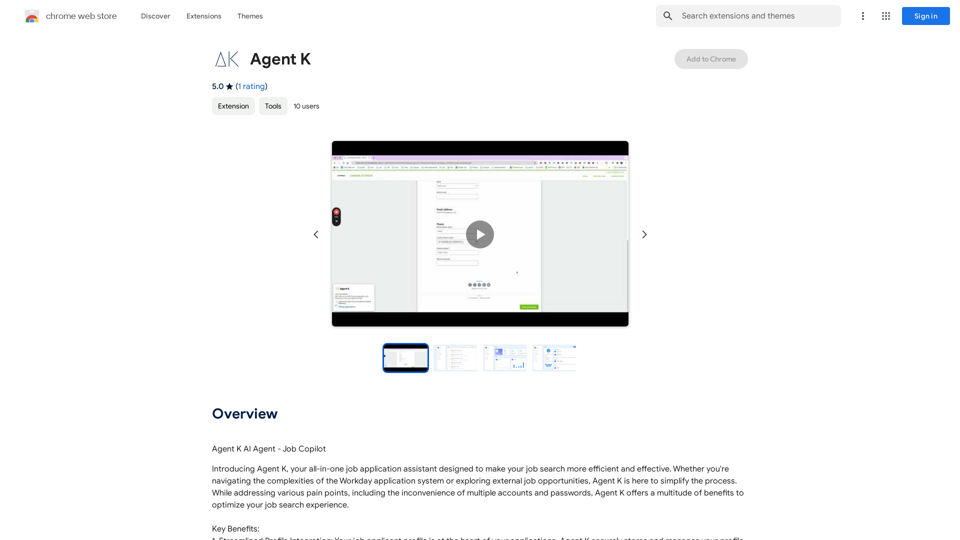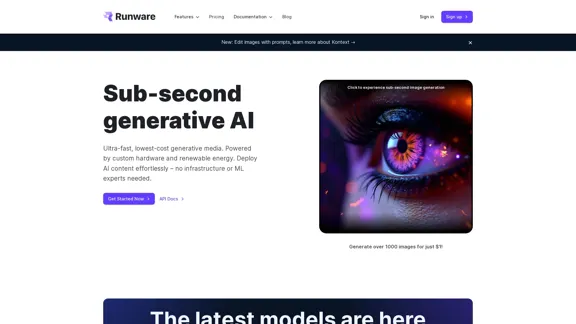G-Data Screen Data is a cutting-edge Google Chrome extension that works in tandem with the G-Data platform to provide personalized digital experiences powered by AI. This innovative tool utilizes advanced screen capture and webcam capabilities, offering users unprecedented control over their data when interacting with Generative AI models.
G-Data Screen Data
Use the G-Data Screen Data extension and the g-datalabs.com platform to gather screen and facial information for training artificial intelligence.
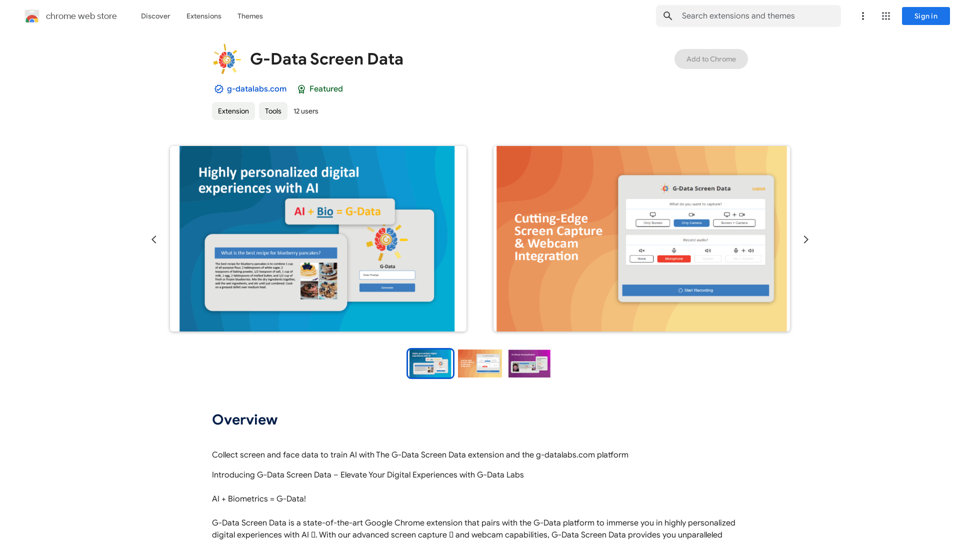
Introduction
Feature
Advanced Screen Capture and Webcam Integration
G-Data Screen Data seamlessly captures your screen and synchronizes with your webcam, collecting precise biometric data to enhance your online experience. This information is then connected to G-Data's next-generation platform, paving the way for groundbreaking digital engagement.
AI-Driven Personalization
The extension leverages AI technology to provide highly personalized experiences. Users can explore a wide range of AI-powered tools to support various tasks, making the most of their daily free uses of G-Data Screen Data.
Unwavering Privacy Commitment
G-Data Screen Data prioritizes user privacy. Your information is not used for training purposes, and you have the option to delete your account at any time, ensuring complete removal of all your data.
Data Control and Value
The G-Data experience is designed to give users control over their shared data and a say in its value. This feature allows users to keep track of the data they generate when working with generative models, contributing to the development of smarter AI models that provide better output.
Free Daily Uses
Users can enjoy 20 free G-Data Screen Data conversations per day, allowing them to explore the platform's capabilities without commitment.
Subscription Option
For users who require more than the daily free allowance, G-Data Screen Data offers affordable subscription products to meet their needs.
FAQ
What is G-Data Screen Data?
G-Data Screen Data is a state-of-the-art Google Chrome extension that pairs with the G-Data platform to immerse users in highly personalized digital experiences with AI. It features advanced screen capture and webcam capabilities, providing unparalleled control of data when interacting with Generative AI models.
How does G-Data Screen Data work?
The extension captures your screen and synchronizes with your webcam, acquiring accurate biometric data to elevate your online experience. This information connects to G-Data's next-gen platform, enabling groundbreaking digital engagement and allowing users to track the data they generate when working with generative models.
Is my information used for training data?
No, G-Data Screen Data highly values user privacy, and your data will not be used for any training purposes. Users have the option to delete their account at any time, which will result in the complete removal of all associated data.
Latest Traffic Insights
Monthly Visits
193.90 M
Bounce Rate
56.27%
Pages Per Visit
2.71
Time on Site(s)
115.91
Global Rank
-
Country Rank
-
Recent Visits
Traffic Sources
- Social Media:0.48%
- Paid Referrals:0.55%
- Email:0.15%
- Referrals:12.81%
- Search Engines:16.21%
- Direct:69.81%
Related Websites
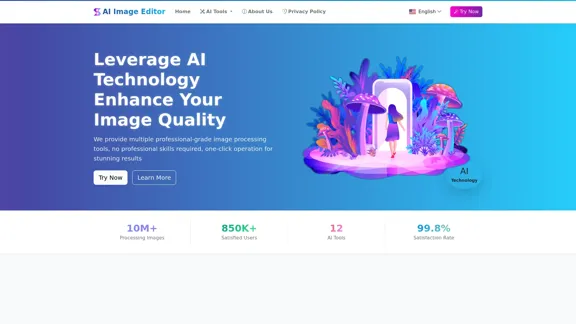
AI Image Editor │ Free Comprehensive Photo AI Tools
AI Image Editor │ Free Comprehensive Photo AI ToolsAIImageEditor.me offers 12 Free AI image tools—from image enhancement and watermark removal to style transfer and background editing—to simplify image editing.
21.99 K
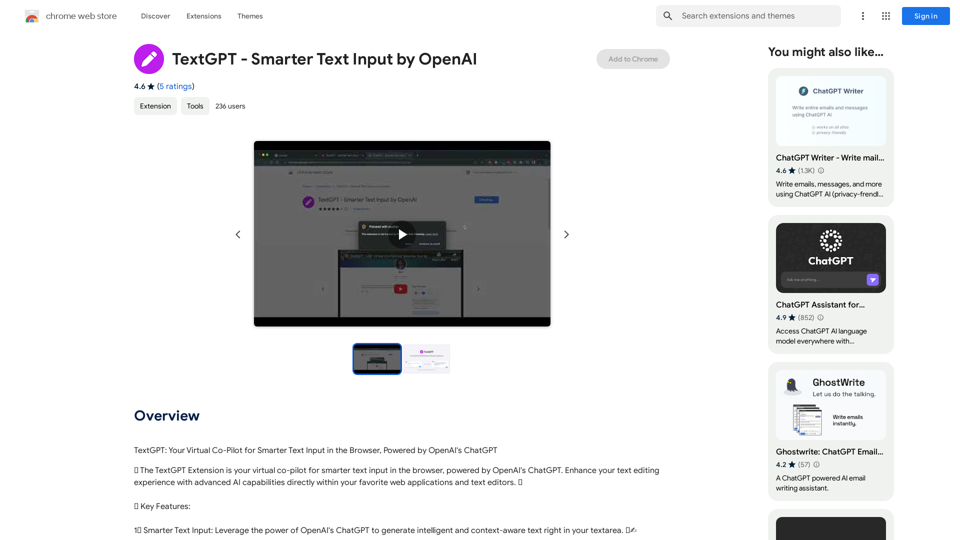
TextGPT: Your Virtual Co-Pilot for Smarter Text Input in the Browser, Powered by OpenAI's ChatGPT
193.90 M
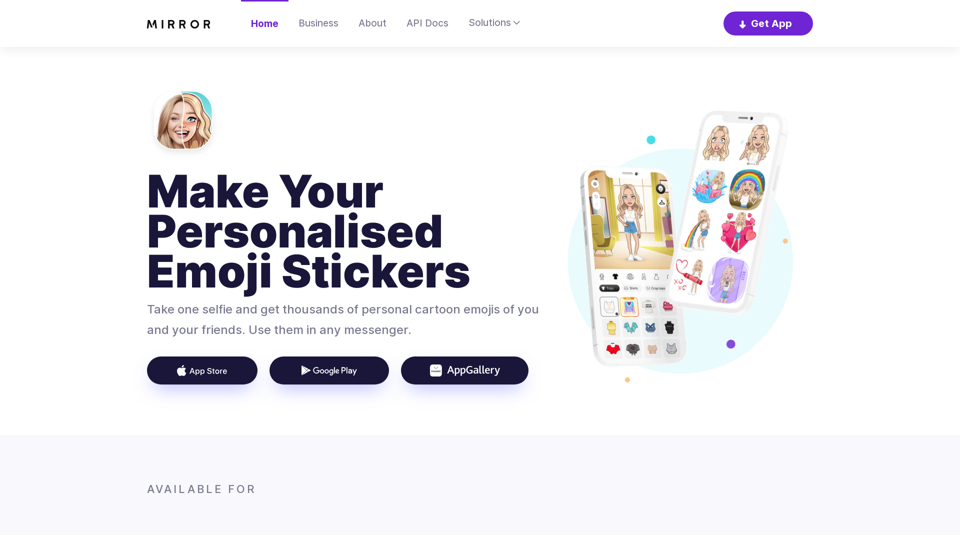
Mirror AI - Emoji Maker and Free AI Avatar Creator
Mirror AI - Emoji Maker and Free AI Avatar CreatorMirror is your personal sticker creator! Take a single selfie and receive thousands of personalized emojis and stickers featuring you and your friends. Use them in WhatsApp, Facebook, iMessage, Telegram, and other messaging apps!
33.59 K
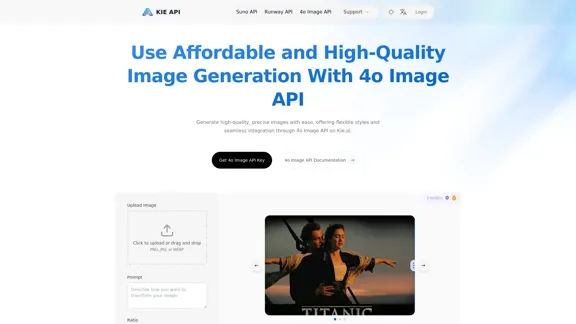
Kie.ai's 4o Image API: Cost-effective, Reliable, and Very Accurate AI Image Creation
Kie.ai's 4o Image API: Cost-effective, Reliable, and Very Accurate AI Image CreationKie.ai’s 4o Image API offers affordable, stable, and highly accurate AI image generation, enabling creators to easily produce high-quality visuals. It provides reliable and efficient solutions for various creative projects, including text-to-image and image-to-image transformations, as well as a range of visual styles.
356.51 K
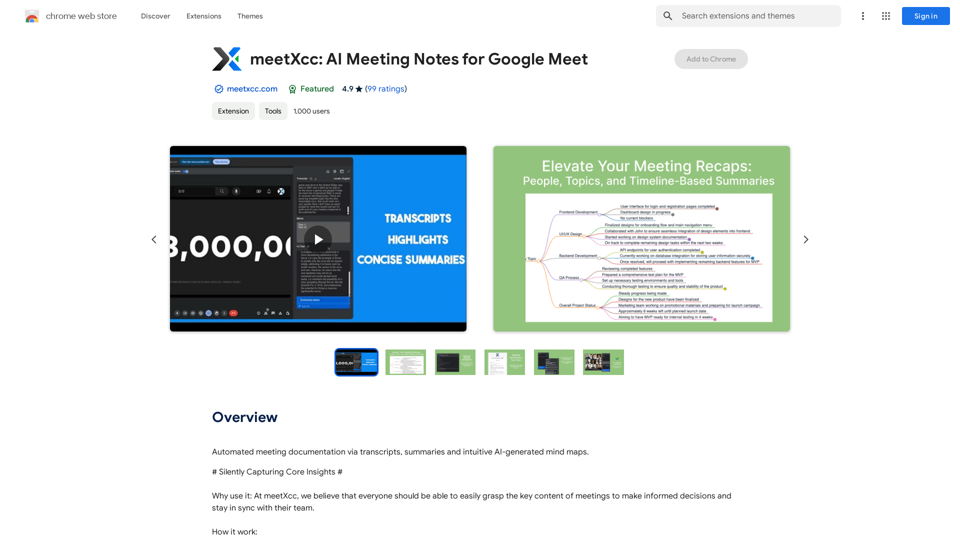
Automated meeting documentation via transcripts, summaries and intuitive AI-generated mind maps.
193.90 M
